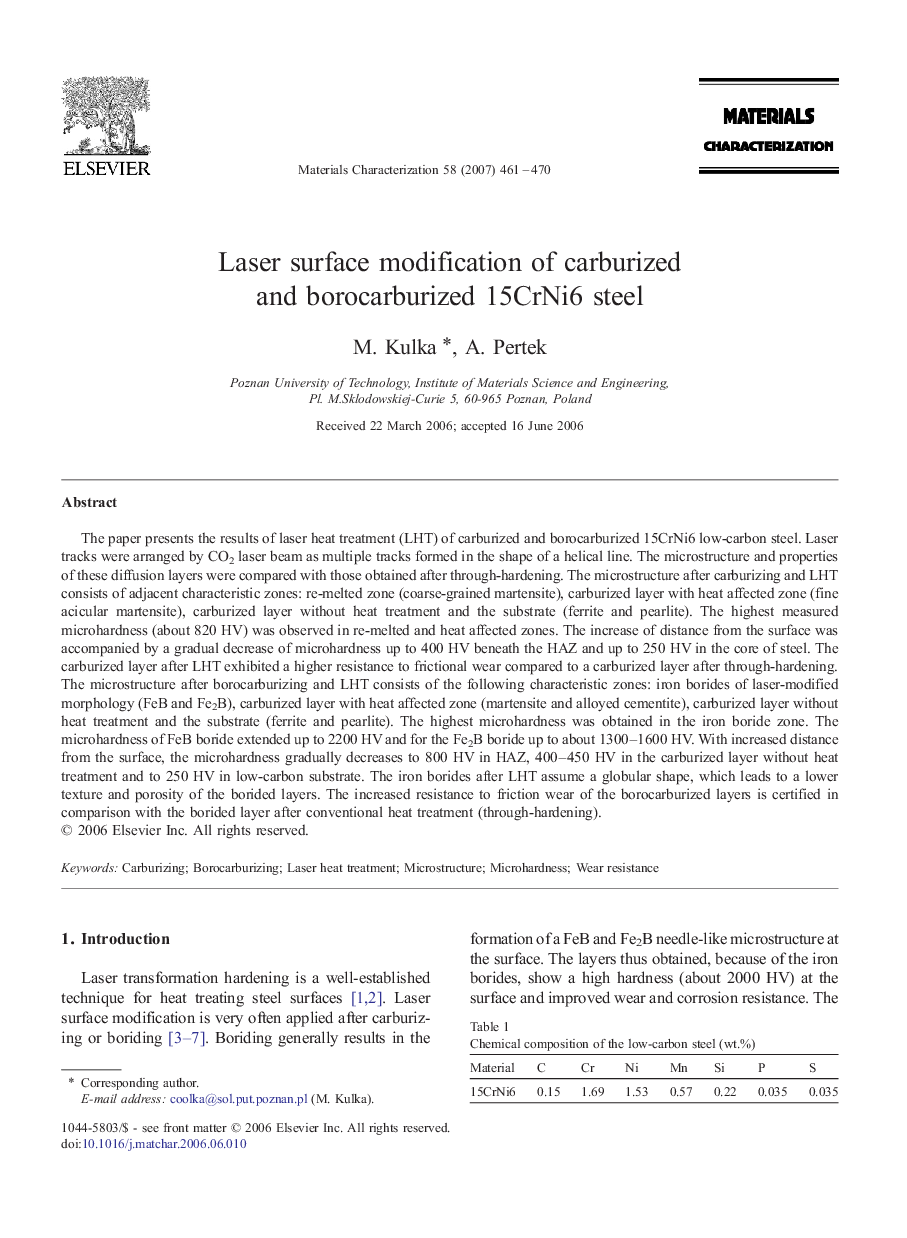| کد مقاله | کد نشریه | سال انتشار | مقاله انگلیسی | نسخه تمام متن |
|---|---|---|---|---|
| 1572577 | 1000689 | 2007 | 10 صفحه PDF | دانلود رایگان |
عنوان انگلیسی مقاله ISI
Laser surface modification of carburized and borocarburized 15CrNi6 steel
دانلود مقاله + سفارش ترجمه
دانلود مقاله ISI انگلیسی
رایگان برای ایرانیان
کلمات کلیدی
موضوعات مرتبط
مهندسی و علوم پایه
مهندسی مواد
دانش مواد (عمومی)
پیش نمایش صفحه اول مقاله

چکیده انگلیسی
The paper presents the results of laser heat treatment (LHT) of carburized and borocarburized 15CrNi6 low-carbon steel. Laser tracks were arranged by CO2 laser beam as multiple tracks formed in the shape of a helical line. The microstructure and properties of these diffusion layers were compared with those obtained after through-hardening. The microstructure after carburizing and LHT consists of adjacent characteristic zones: re-melted zone (coarse-grained martensite), carburized layer with heat affected zone (fine acicular martensite), carburized layer without heat treatment and the substrate (ferrite and pearlite). The highest measured microhardness (about 820Â HV) was observed in re-melted and heat affected zones. The increase of distance from the surface was accompanied by a gradual decrease of microhardness up to 400Â HV beneath the HAZ and up to 250Â HV in the core of steel. The carburized layer after LHT exhibited a higher resistance to frictional wear compared to a carburized layer after through-hardening. The microstructure after borocarburizing and LHT consists of the following characteristic zones: iron borides of laser-modified morphology (FeB and Fe2B), carburized layer with heat affected zone (martensite and alloyed cementite), carburized layer without heat treatment and the substrate (ferrite and pearlite). The highest microhardness was obtained in the iron boride zone. The microhardness of FeB boride extended up to 2200Â HV and for the Fe2B boride up to about 1300-1600Â HV. With increased distance from the surface, the microhardness gradually decreases to 800Â HV in HAZ, 400-450Â HV in the carburized layer without heat treatment and to 250Â HV in low-carbon substrate. The iron borides after LHT assume a globular shape, which leads to a lower texture and porosity of the borided layers. The increased resistance to friction wear of the borocarburized layers is certified in comparison with the borided layer after conventional heat treatment (through-hardening).
ناشر
Database: Elsevier - ScienceDirect (ساینس دایرکت)
Journal: Materials Characterization - Volume 58, Issue 5, May 2007, Pages 461-470
Journal: Materials Characterization - Volume 58, Issue 5, May 2007, Pages 461-470
نویسندگان
M. Kulka, A. Pertek,